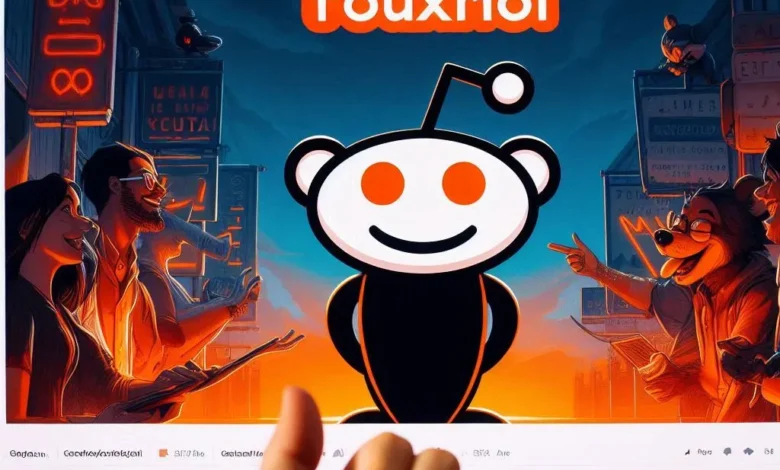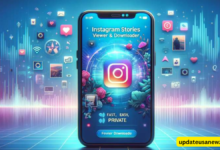Exploring the Phenomenon of “Fauxmoi”

Introduction
In the vast and ever-changing world of internet culture, new terms and concepts emerge almost daily. Among these is “Fauxmoi,” a term that has sparked curiosity and intrigue across social media and online forums. But what exactly is Fauxmoi? Simply put, Fauxmoi is a term that combines “faux” (French for “false”) and “moi” (French for “me”), hinting at the idea of a fabricated or fictionalized self. However, its implications run much deeper than a surface-level definition.
Fauxmoi represents the curated personas people craft online, blending reality with a touch of fabrication. These personas often reflect an idealized version of the self, emphasizing aesthetic perfection, aspirational lifestyles, and, at times, an entirely fictional existence. From influencers showcasing picture-perfect moments to anonymous users crafting entire identities, Fauxmoi encapsulates the art of selective self-presentation in the digital age.
Understanding Fauxmoi requires a closer look at how digital platforms encourage users to adopt certain behaviors. Whether through Instagram’s carefully curated feeds, TikTok’s viral trends, or even anonymous forums, the concept underscores the tension between authenticity and performance. It raises critical questions about how people perceive and project their identities in virtual spaces.
The Rise of Curated Online Identities

The rise of Fauxmoi is intrinsically tied to the evolution of social media. In the early days of the internet, online interactions were often raw and unfiltered. Platforms like MySpace, early Facebook, and forums allowed users to express themselves without the pressure of polished aesthetics or widespread scrutiny. Over time, however, the internet transformed into a space where appearances matter more than ever.
Instagram’s emergence marked a turning point in the shift toward visual perfection. With filters, editing tools, and the pressure to maintain a cohesive feed, users began constructing online personas that veered away from reality. Similarly, TikTok’s algorithm rewards trends and content that captivates audiences, often pushing creators to exaggerate or dramatize aspects of their lives for engagement.
The rise of influencers further solidified the Fauxmoi phenomenon. Influencers thrive on their ability to connect with audiences, often blurring the lines between personal authenticity and performative content. This blend of the real and the fabricated creates a fertile ground for Fauxmoi to flourish, as users imitate these carefully crafted personas to gain social validation.
The Psychology Behind Fauxmoi
Why do people feel compelled to create a Fauxmoi? At its core, the phenomenon taps into deep psychological needs for acceptance, validation, and self-expression. Humans have always had an innate desire to present themselves in the best possible light. Social media amplifies this tendency, offering instant feedback through likes, comments, and shares.
The concept of social comparison plays a significant role in the rise of Fauxmoi. When users see others showcasing seemingly perfect lives, they may feel pressure to match those standards, even if it means stretching the truth. This creates a cycle where everyone participates in a collective performance, blurring the line between reality and illusion.
Moreover, the anonymity of the internet provides a unique opportunity for experimentation. Platforms like Reddit or anonymous social apps allow individuals to step into entirely different identities, free from the constraints of their real-life persona. This freedom to create a Fauxmoi can be liberating, but it also raises ethical questions about authenticity and trust in online interactions.
The Aesthetic of Fauxmoi: Visual and Narrative Curation
Fauxmoi isn’t just about what people say; it’s about how they present it. The aesthetic of Fauxmoi is meticulously crafted, often combining aspirational visuals with compelling storytelling. Think of the Instagram influencer with perfectly lit photos, or the TikTok creator whose every video seems effortlessly entertaining. These representations are rarely accidental—they are the result of careful planning and execution.
Visual curation plays a significant role in the Fauxmoi phenomenon. Filters, photo editing apps, and even AI tools are employed to enhance images and create a desired effect. The result is an aesthetic that feels polished yet attainable, drawing in audiences who aspire to replicate it.
Narrative curation is equally important. The stories people share online—whether through captions, posts, or videos—often follow a specific theme or brand. These narratives are designed to evoke emotions, build connections, and, in some cases, sell a product or lifestyle. Fauxmoi thrives in this space, where the lines between genuine self-expression and strategic storytelling blur.
The Impact of Fauxmoi on Mental Health
While Fauxmoi can be a tool for creativity and self-expression, it also has significant implications for mental health. The pressure to maintain a curated persona can lead to feelings of inadequacy, anxiety, and burnout. For many, the gap between their real-life experiences and their online persona becomes a source of stress.
One of the most concerning aspects of Fauxmoi is its contribution to social comparison. Studies have shown that excessive social media use can lead to lower self-esteem, particularly when users compare themselves to idealized representations online. This can create a vicious cycle, where individuals feel compelled to enhance their online personas to keep up with perceived standards.
Furthermore, the performative nature of Fauxmoi can lead to a loss of authenticity. When individuals focus solely on projecting an idealized image, they may struggle to connect with others on a genuine level. This disconnect can exacerbate feelings of loneliness and alienation, particularly in younger users who are still developing their sense of self.
The Role of Platforms in Shaping Fauxmoi
Social media platforms play a significant role in fostering the Fauxmoi phenomenon. Algorithms prioritize content that generates engagement, often rewarding creators who conform to popular trends or aesthetics. This creates an environment where users feel incentivized to craft personas that align with platform norms.
Features like filters, editing tools, and curated feeds further enable the creation of Fauxmoi. While these tools can be used creatively, they also encourage users to present an idealized version of themselves. Platforms like Instagram and TikTok have faced criticism for perpetuating unrealistic beauty standards and promoting content that prioritizes appearance over substance.
Interestingly, some platforms are beginning to push back against the Fauxmoi trend. Apps like BeReal encourage users to share unfiltered moments, emphasizing authenticity over curation. While these initiatives are a step in the right direction, they face an uphill battle against the deeply ingrained culture of performance on social media.
How to Navigate Fauxmoi in Your Digital Life
Navigating the world of Fauxmoi requires a conscious effort to balance authenticity with the desire for self-expression. For individuals looking to maintain their mental health while engaging with social media, a few strategies can be helpful.
First, it’s essential to recognize the curated nature of online content. Remember that what you see on social media is often a highlight reel, not an accurate representation of someone’s life. Keeping this perspective can help reduce the pressure to match unrealistic standards.
Second, consider setting boundaries around your social media use. Limiting screen time, unfollowing accounts that trigger negative feelings, and focusing on content that inspires rather than compares can make a significant difference.
Finally, embrace authenticity in your online presence. Sharing unfiltered moments, expressing genuine thoughts, and connecting with others on a deeper level can be a powerful antidote to the Fauxmoi phenomenon.
The Future of Fauxmoi: Trends and Predictions
As the internet continues to evolve, so too will the concept of Fauxmoi. Emerging technologies like augmented reality (AR) and virtual reality (VR) are likely to expand the possibilities for crafting digital personas, blurring the lines between the virtual and physical worlds even further.
At the same time, growing awareness of the impact of social media on mental health may lead to a push for more authenticity online. Platforms could introduce features that promote genuine interactions, and users may increasingly value content that feels real and relatable.
The rise of niche communities and alternative platforms also points to a potential shift away from the performative culture of mainstream social media. As users seek spaces where they can connect authentically, the influence of Fauxmoi may begin to wane.
Conclusion: Embracing Balance in a Fauxmoi World
Fauxmoi is a fascinating reflection of the complexities of modern identity in the digital age. While it offers opportunities for creativity and self-expression, it also highlights the challenges of navigating a world where appearances often take precedence over authenticity.
By understanding the dynamics of Fauxmoi and adopting strategies to maintain a healthy relationship with social media, individuals can strike a balance between the real and the curated. As we move forward in an increasingly digital world, this balance will be crucial in fostering genuine connections and promoting mental well-being.

